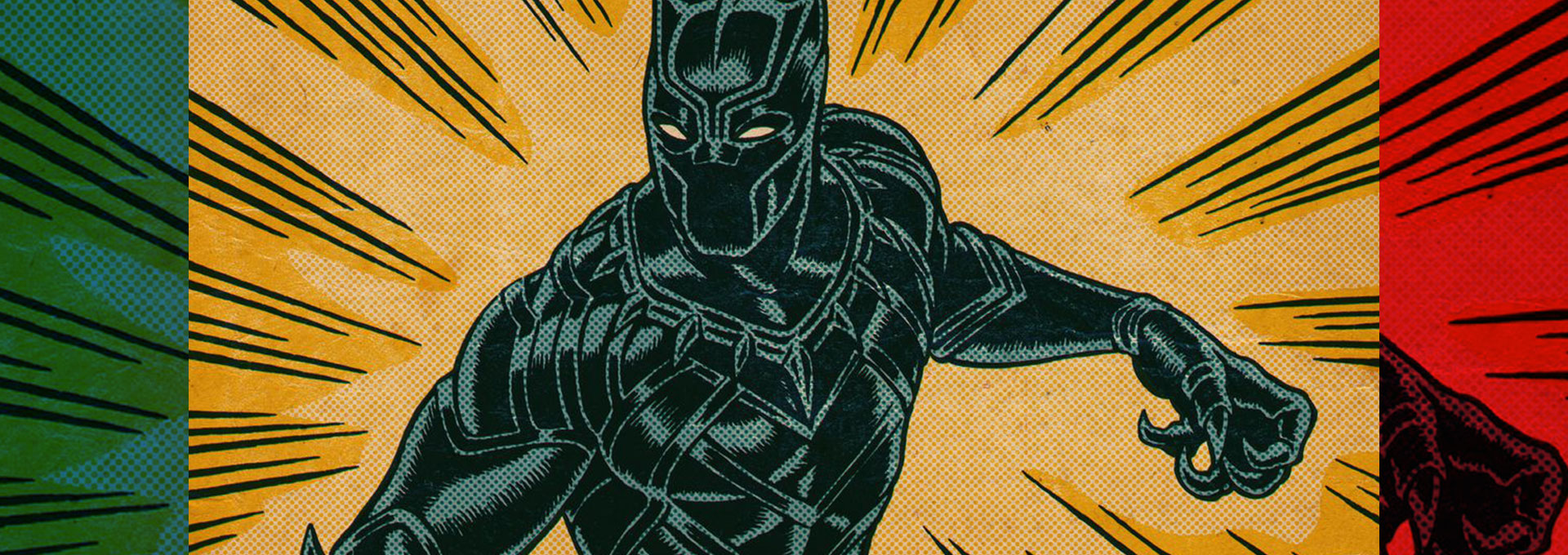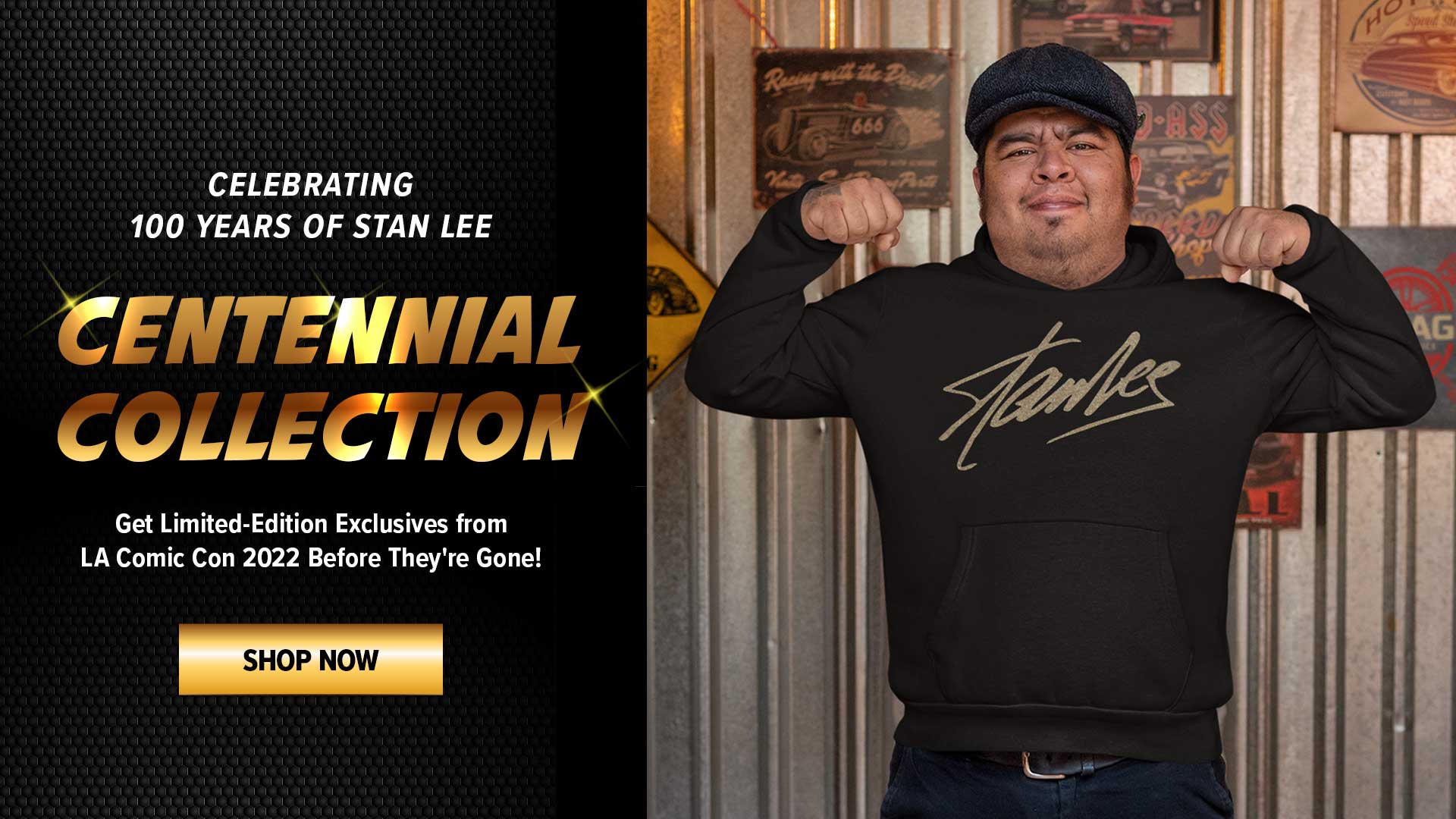February is Black History Month. In the world of Marvel Comics and the MCU, there has never been a more triumphant time to feature the talents of black actors, directors, and other creatives in the industry. Thanks to the phenomenal success of Black Panther last year, the celebration of black comicbook characters is in full swing. As part of this year’s Black History Month, below is a timeline highlighting some of the major black comicbook characters in Marvel comics.
Black Panther – 1966

In 1966, Stan Lee and Jack Kirby created Black Panther and thus the first black superhero in mainstream comicbooks was born. The character first appeared in Fantastic Four #52 and eventually made his way into both the Captain America and Avengers titles over the rest of the decade. Fast forward to 1973 and the first comic story to star Black Panther, Jungle Action #5. This series ran for over three years to critical acclaim. Since then, King T’Challa of Wakanda has never been absent from the comics pages for too long. Throughout these sporadic comicbook runs, the wheels were turning at Marvel Studios as they worked to bring the character to life in the grandest way possible. In 2016, that finally happened in Captain America: Civil War. The rest is movie history, and it’s still being made!
Falcon – 1969

Shortly after the debut of Black Panther in Marvel comics, Stan Lee and Gene Colan co-created Sam Wilson, aka Falcon, who first appeared in Captain America comics in 1969 as a stalwart friend and partner to Captain America. As Falcon he used high-tech wings and gadgets, as well as his trained falcon Redwing, to assist him in fighting crime. Falcon went on to join famous superhero teams like the Defenders and the Avengers. Eventually Wilson, out of necessity, took up the mantle of Cap himself. He was doing very well in the MCU, too, before Thanos came along, so hopefully his character will return and we can see what he does next!
Prowler – 1969

The Prowler first appeared in 1969 as a Spider-Man villain with the secret identity of Hobie Brown, created by Stan Lee and John Buscema. He didn’t have superpowers, only a nefarious plan and superior engineering skills, but those abilities still served him well in his solo comicbook title released years later, which showed Prowler as a hero instead of a villain. Eventually the mantle of Prowler was taken up by Miles Morales’ uncle, Aaron Davis, in 2011 and the character was reborn for a whole new audience. Most recently, the Prowler appeared in Spider-Man: Into the Spider-Verse to rave reviews.
Luke Cage – 1972

Luke Cage was inspired by blaxploitation films of the early 1970s, such as Shaft (1971). Cage was created by Archie Goodwin, George Tuska, Roy Thomas, and John Romita. Although the character started out as a reflection of a popular trend when he debuted in 1972, his series Luke Cage, Hero for Hire endured long past it. After several years, Cage teamed up with Iron Fist in a series called Power Man and Iron Fist which lasted until 1986. After a few years off, the character reemerged as an Avenger and was featured in several comicbook titles such as Alias. More recently, Cage made it to the live-action space in his titular Netflix series and looks better than ever these days!
Blade – 1973

Blade started out as a strange supporting character in a lesser-known comicbook at Marvel entitled The Tomb of Dracula. Created by Gene Colan and Marv Wolfman, Blade was a grim, driven vampire slayer with semi-vampiric powers of his own, aided by his superior knife-wielding skills. Immediately after his debut he appeared in several horror series before getting his own comicbook title 1974, which ran for two years. Years later, the 1990s brought Blade back into prominence with over five different comicbook series and his big screen debut in 1998’s Blade. The film franchise spawned only two sequels, but Blade’s frequent appearances in Marvel comics shows that the character is just as popular today as he was forty years ago.
Misty Knight – 1975

Misty Knight entered the scene in 1975 as another character crafted to bank on the blaxploitation trend, this time created by Tony Isabella and Arvell Jones. Thanks to Misty’s bionic arm, which was created for her by Tony Stark, she went from NYPD detective to a full-on superhero. In partnership with Colleen Wing, Misty made up one half of the private investigator team Daughters of the Dragon. The two crime-fighting women often teamed up with Luke Cage and Iron Fist. Misty shared an interracial kiss with her then-boyfriend Danny Rand/Iron Fist in 1977, one of the first such kisses to appear in mainstream comics. Fast forward to now, and not only has there been a resurgence of Misty Knight’s presence in the comicbooks, but she’s also been portrayed onscreen in three Netflix live-action series: Luke Cage, Iron Fist, and The Defenders.
Storm – 1975

In 1975, the X-Men added their first black female character to the lineup, Ororo Munroe, aka Storm, created by Len Wein and Dave Cockrum. She soon became one of the most popular X-Men and was featured in several prominent X-Men comicbook titles and stories, as well as the successful series of X-Men films. Storm remains one of the most prominent and notable female characters in Marvel lore over thirty years after her comicbook debut.
War Machine – 1979

Whether he’s called War Machine, Iron Patriot, or simply Rhodey, Tony Stark’s best friend is the wise and talented James Rhodes. Created by David Michelinie and John Byrne, his guest role in an Iron Man story arc began in 1979, and he quickly turned into a pivotal character throughout the 1980s. At one point, he even took up the mantle of Iron Man while Tony Stark was indisposed. Eventually, he went on to have his own eponymous series as War Machine. Rhodey’s sense of right and wrong and his dedication to justice makes him the perfect team member to fight alongside Tony Stark and the rest of the Avengers in the MCU.
Miles Morales – 2011

The newest addition to the roster of major black Marvel comicbook characters came in 2011 with the creation of a black Spider-Man, Miles Morales, created by Brian Michael Bendis and Sara Pichelli. In a universe set apart from the rest of the Marvel comics canon, another radioactive spider bit young Miles, giving him the same powers as Peter Parker, but when Parker eventually died in that universe, Morales took on the mantle of Spider-Man. After a few stories in this world, called Ultimate Spider-Man, Morales experienced a snag in the space-time continuum which brought him into the mainstream Marvel universe. There he met the original Peter Parker we all know and love, and all was well. Morales appeared in his own Spider-Man title over the next decade in addition to making several appearances in animated TV series and video games. His biggest gig to date came just last year with the Sony film Spider-Man: Into the Spider-Verse. Judging by critical and fan acclaim, it looks like Miles Morales has changed the game once again, just like Black Panther, Falcon and all the rest before him.



